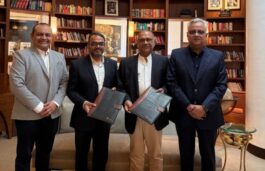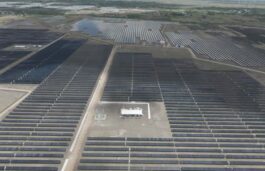
TERI has presented its suggestions for key allocations and policy signals before the government rolls out the Union Budget

For The Energy and Resources Institute (TERI), green is the only way to go as it has presented its suggestions for key allocations and policy signals before the government rolls out the Union Budget on February 1, 2020, that will take India ahead on this path.
Some of the suggestions for high allocations are:
1) Kisan Urja Suraksha evam Utthaan Mahabhiyan (KUSUM): The KUSUM programme, through the innovative approach of selling excess electricity from solar panels (when it not being used for running the irrigation pump), is transforming both electricity supply in rural areas as well as provides an additional entrepreneurial revenue scheme for farmers. This programme should be enhanced by increasing the allocation for each of its components.
Furthermore, the institute suggests that a new component should be added which focuses on providing support for creating water markets. For example, a farmer may buy water from a neighbouring farmer with a solar pump, and not invest in water pumping him or herself.
2) Aggregation of Energy Efficiency Equipment demand in Small and Medium Enterprises (SME) Clusters: The Perform, Achieve, and Trade (PAT) programme of the Bureau of Energy Efficiency (BEE) has been extremely successful in enabling large industries to become world-class in energy efficiency. However, this benefit has not been exploited by SMEs where the lack of skilled manpower has been a major constraint.
It proposed that allocation may be provided to enable aggregation of energy efficiency demand in SME clusters. The programme could enable local organisations to aggregate demand of energy-efficient equipment and supply and maintain these equipment, with payments being made over a period of time, and each payment is less than the savings obtained by the SME enterprise due to the lower energy bill. The transactions should be on a commercial basis, with the allocation enabling aggregation of demand and supply of energy-efficient equipment. This would enhance the profitability of SMEs and create local enterprises that could provide these services.
3) Viability Gap Funding for Grid-connected Battery Installations: Solar electricity, at less than Rs.2.5 per kWh, is the cheapest electricity that is available in India, but only when the sun is shining. However, peak demand occurs in the evening and at night when lighting and home air conditioners are switched on. Consequently, there is growth in both solar energy and coal energy – leading to undesirable double investment.
TERI’s analysis indicates that with performance increases and economies of scale, the price of batteries to store solar energy produced during the day, would fall, and electricity from solar storage at night would be competitive with electricity from coal between 2024 and 2027. It is now essential to jumpstart this market. The Central Electricity Regulatory Commission (CERC) has already issued draft regulations regarding the bulk procurement of electricity through real-time competitive processes. This provides the right signal for battery storage to be set up to provide solar electricity during high demand hours at night.
TERI proposes that the Union Budget may create a Viability Gap Fund for a limited amount of grid-connected battery storage to be set up so that it can competitively provide stored solar electricity at peak hours during the night. This would build up the economies of scale necessary for a price reduction of batteries to competitive levels, and also provide the technical and human experience for managing electricity systems with integrated battery storage.
For the complete list of suggestions and policy signals click here.



























